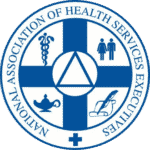Attracting doctors to underserved communities is never easy. But we know that autonomy, mission, work/life balance, loan repayment, visa sponsorship, and little on-call responsibility are incentives that are often worth more than the compensation package to doctors these days. One doctor stated, “In a rural setting, it kind of pushes you to use more of the broader knowledge you’ve learned because they’re aren’t as many specialists available.” While these perks can intrigue healthcare leaders, what can you do to also retain them? We have answers that will help you attract and retain the best and brightest to your community healthcare organization.
How to Attract Physician Leaders to Community Healthcare Organizations
Traditionally, many physician leaders stayed in the same role for decades, often retiring directly from a job they’d held for many years. Today’s doctors and nursing leaders are much more mobile now. This creates opportunity for organizations seeking clinical leadership. After all, these physician leaders are moving somewhere—why not to your community facility?
But pulling this off is hard given that your nearest competitor may be a large multi-state healthcare system in a less rural or another underserved environment. Staying pay-competitive against these larger institutions is a challenge for almost every community provider.
The American Association for Physician Leaderships suggests, “To attract physicians to work in a smaller setting…leaders can consider introducing an incentive-driven corporate executive structure, with a bonus plan tied not only to the length of service, but also to productivity, quality, and patient satisfaction—the metrics that often propel hospital revenue.” Tim Mulvaney, CEO at UHC Solutions calls these programs MBOs or Management By Objective.
We would also argue that the idea of mission in healthcare is increasingly important to young leaders fresh out of residency. Deloitte says, “Gen Zs and millennials want meaningful and flexible work.” Millennial professionals are actively looking for a cause to care about and this is something that community healthcare organizations can capitalize on. There is also the icing on the cake of erasure of tuition debt that can be applied as leverage in most job negotiation sessions.
Finally, beyond attracting existing physician leadership to your facility, there is also the future pipeline of this talent to consider. Instead of attracting physician leaders as your sole strategy, consider a secondary approach to building these leaders from within. The American Association for Physician Leadership recommends, “Doctors with recognizable leadership potential or proven skills should be placed in a path of increased responsibility within organizations to help them develop their executive skills.”
But if you’re attracting and building leadership within your organization, there is a third element to consider to make this initiative successful. How will you retain these professionals in an environment of increasing competition for these skills?
Retaining Physician Leadership
There are several steps you can take to improve the working conditions of your valuable physician leaders. For example:
- Evaluating current compensation metrics is an important way to stay competitive within a changing healthcare environment. When was the last time you reviewed whether you were paying fair market value for your physician leaders? Are you paying a retention bonus? What incentives can meet the needs of your current workforce as well as help attract new talent?
- Surveying your providers regularly and then acting on the results can help everyone, from physician leadership on down, have better work/life balance, more competitive salaries, less stress—and generally improve the environment.
- Improve the balance between administrative and clinical responsibilities by staffing up to lighten the load. UHC Solutions can help you fill open positions more quickly to help you achieve this goal.
UHC Solutions is the leading provider of executive, administrative, and clinical talent to community healthcare organizations. Let’s talk about how you can reach your hiring goals and how it can help with the retention of your critical talent at every level of your organization.




